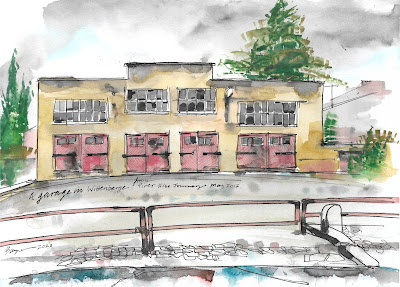SOUTH OF SLOUGH
We made a small tour of villages south of Slough, Datchet close to the river,
Wraysbury, Horton, and Colnbrook.
Oh joy! The Costa Coffee was open in Datchet staffed by two extremely happy and courteous people. Datchet nestles on the north bank of the Thames and to its north thunders the M4. East Enders’ Danniella Westbrook lives in Datchet but I didn’t bump into her.
The church was closed, not a surprise.
Onwards to Wraysbury where St Andrew Parish Church was closed also, no a surprise, however it was nicely situated of the main road and solidly remodelled by the Victorians and sat it a lovely church yard.
Under a cloudy sky this is a curious part of the world, either the housing stock is falling into disrepair or huge mansions boast high wrought-iron gates of impossibly intricate design. A garage cuddles up to the Nail bar next door, Five Star Nails, 15, The High Street. Wraysbury is also served with two railway stations. Christine Keeler hails from this village.
 |
| Well remembered in Horton Churchyard |
 |
Travellers Rest
|
Horton and the church, St Michael, were closed, we were denied examining the Norman arch of the north door porch. What was open and exciting was the extension to the churchyard. It was full of highly decorated and beautifully tended graves. A local resident informed us that these were Romany graves. Each week family members come to tend the graves. Special services are held each year for the Travellers in this part of the world. Full story here https://www.churchtimes.co.uk/articles/2017/17-march/features/features/ministering-at-the-margins
 |
Will PANAM relaunch from Wraysbury?
|
Lakes of varying sizes are all around originating from former gravel workings are a particular feature. During the 1930’s, due to the presence of huge quantities of gravel in this area, farming started to give way to the gravel extraction industry. And there are two whopping reservoirs Wraysbury and the Queen Mother.
We passed desultory Waterpark with old London Buses parked at its boundary perhaps they were changing rooms?
Bingo! Down the road in the village of Colnbrook the church was open! St Thomas’s Church, It was designed by Benjamin Ferry who was a pupil of the great Victorian neo-gothic designer, Augustus Pugin, and the church is very much in the gothic style.
Inside it was spick and span. David Shields the Church Warden welcomed us. He showed us round and then offered tea and coffee.
 |
A fine welcome from St Thomas' Colnbrook
|
This was a remarkable end to a thoroughly interesting and to be reaped tour of one of the most beguiling parts of Buckingham or it is perhaps Berkshire? Well south of Slough anyway.
















